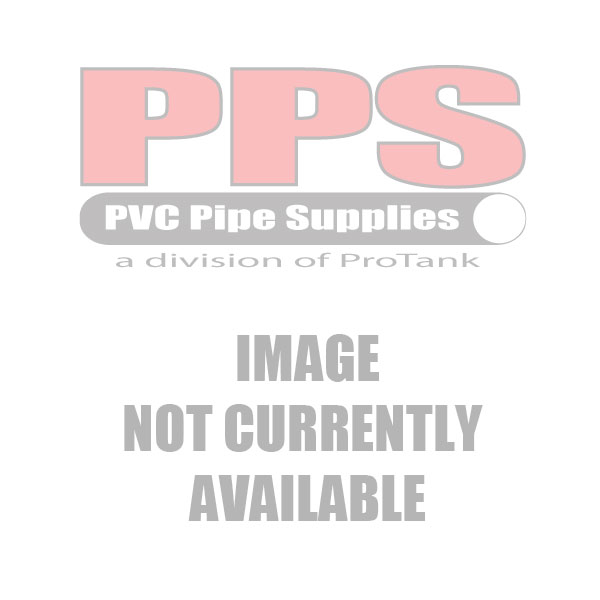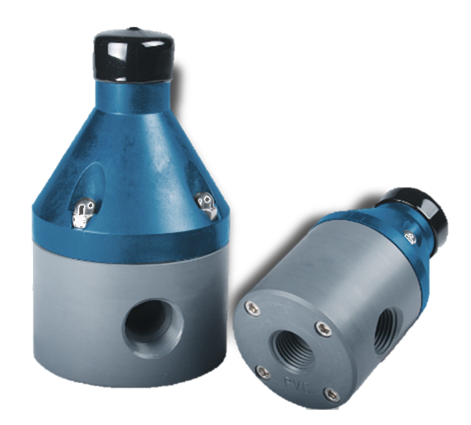What are Diaphragm Valves: Description, Common Uses and Specifications
Overview
Diaphragm valves are flow control or pressure moderation plumbing valves. They are fitted with an internal diaphragm made of resistant thermoplastic materials that can be adjusted according to application demands. The innovative and adjustable design of diaphragm valves allows their internal diaphragm to be set for differing levels of flow or pressure. This in turn offers detailed control of system operation by restricting or maximizing plumbing flow rates as needed.
Pressure relief type diaphragm valves are engineered to accommodate individual pressure maximums. When internal plumbing pressures reach these valve’s set level it triggers valve operation and effectively relieves excess pressure within the system. Diaphragm valves are well suited for process systems that need precise flow control and ones that develop operation pressure or back pressure due to system fluctuations.
Application
Diaphragm valves are frequently used due to their ability to be finely tuned and the compatibility of the diaphragm material with commodity fluids. These valves are often employed within chemical synthesis and dosing operations, oil and gas injection scenarios, water and wastewater treatment, chlorination systems of large pools and waterparks, pulp and paper production, metal finishing and electro plating, healthcare, as well as food and beverage processing.
Specifications
Manufacture
Our diaphragm valves are US made by Hayward Industries. The valve bodies are manufactured from either PVC or CPVC thermoplastic materials with the option for PP or PVDF. PVC diaphragm valves are made from Cell Class 12454 PVC. CPVC diaphragm valves are made from Cell Class 23447 CPVC. Our diaphragm valves meet ASTM D1784 design standards and receive ANSI / NSF 61 and 372 certifications for lead-free, potable water use.
Sizes
Diaphragm sizes are available from 1/4" to 6"' plumbing diameters. Full valve sizes are 1/4", 3/8", 1/2", 3/4", 1", 1-1/4", 1-1/2", 2", 2-1/2", 3", 4", and 6". Only DAB series flange type are offered standard from 2" to 6". Additional sizes to suit application needs can be provided on request.
Connections
Diaphragm valves come in FPT x threaded, flange style, or socket and threaded connection types. DAB series valves come with flange or True Union socket and thread connections. RPV and PBV valves are fitted with FPT x threaded type connections and are suitable for horizontal or vertical installation.
Seals
Socket and threaded True Union type diaphragm valves feature double EPDM material o-rings at each union port.
Diaphragm Valve Series
Diaphragm valves are offered in DAB series flow control, PBV back pressure and RPV pressure relief series models. The individual valve performance specifications will vary by series type.
 DAB Series | Flow Control
DAB Series | Flow Control
DAB series diaphragm valves are also known as flow control valves. They are rated for 150 PSI (10.3 bar) @ 70˚F (21˚C) for 1/4in valves up to 5in valves and rated to 75 PSI (5.17 bar) @ 70˚F (21˚C) for 6in flanged type only. DAB models feature sure grip handwheels and high visibility, beacon position indicators for precision diaphragm control. DAB type valves can be fitted with EPDM, FPM or PTFE diaphragm materials. DAB series valves are also suitable for actuator installation.
Products: DAB Series Diaphragm Valves
 RPV Series | Pressure Relief Valve
RPV Series | Pressure Relief Valve
The RPV series diaphragm valve is also known as a pressure relief valve. They feature PTFE/EPDM diaphragms and are rated to 250 PSI (17.2 bar) @ 70°F (21°C). RPV series valves have been engineered to protect systems from over-pressurization by retaining total pressures beneath a certain level. The valves are designed to release excess pressure build up from the relief port when internal pressures increase past the set level. This function is controlled by an adjustable diaphragm spring with an operation range between 10 to 150 PSI. The springs come set at 50 PSI and can be easily changed via the adjustment screw slot. These are Hayward pressure relief valves.
Products: RPV Series Diaphragm Valves
 PBV Series | Back Pressure Valve
PBV Series | Back Pressure Valve
The PBV series diaphragm valves is also known as a back pressure valve. Similar to RPV models, they feature PTFE/EPDM diaphragms and are rated to 250 PSI (17.2 bar) @ 70°F (21°C). Back pressure RPV valves are anti siphon devices that promote stable fluid / dosing rates by eliminating fluctuating back pressures. RPV diaphragm valves are set to specific pressure limits. When pressures increase past the threshold, it causes the diaphragm to raise from the seat and allows fluid to flow until pressure returns. PBV diaphragm springs are preset to 50 PSI and are easily field adjusted between 10 to 150 PSI with the adjustment screw. These valves are Hayward back pressure valves.
Products: PBV Series Diaphragm Valves
Diaphragm Valve Options
All diaphragm valves are also available in polypropylene (PP) or PVDF body materials. Internal diaphragm options are available in EPDM, FPM, PTFE (Teflon™) or PTFE/EPDM. Valves with EPDM or PTFE diaphragms can be fitted with PVDF material vapor barriers.
Diaphragm Valves are Right for You if....
Diaphragm valves are the right choice if you need to relieve pressure in a contained process system, need to prevent the build up of back pressure, need to prevent fluid siphoning or need to control flow to an injection point. Check out PVC Pipe Supplies Diaphragm Valves for Sale.